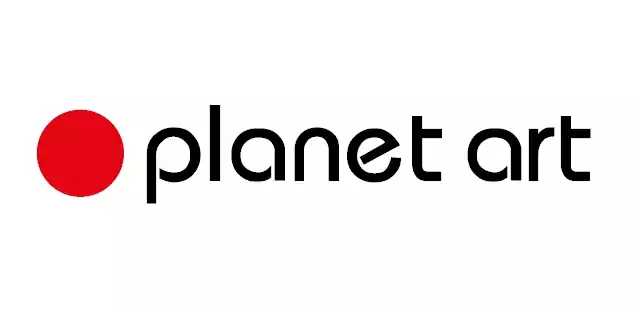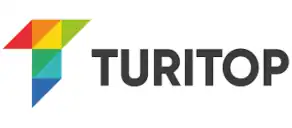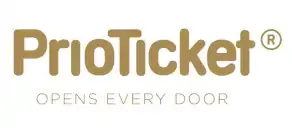Can't cloud technology expand its platform when queue surges hit its servers?
A common question arises: if cloud technology can read traffic volume and scale accordingly, why do we need an online queuing system? After all, cloud-based solutions offer the promise of dynamic scaling, adjusting server capacity in response to increased demand. However, this process isn’t instantaneous, and that delay can present significant challenges.
While cloud technology can scale server capacity to accommodate high traffic, it takes several minutes for this additional capacity to activate. During that critical time, your website might still experience server overloads, causing website crashes and an inability to deliver a seamless ticketing experience. For high-demand ticket sales, this brief window of vulnerability can result in missed opportunities, lost revenue, and customer dissatisfaction. Fans who are eager to purchase tickets for popular events may encounter frustrating error messages or crashes, increasing their stress and diminishing their overall user experience.

Though cloud-based scaling is essential for managing larger volumes of traffic, it doesn't provide an immediate solution. This is where a virtual waiting room or online queuing system comes into play. By implementing a queue management system, excess visitors can be placed into a virtual queue, alleviating pressure on servers during those crucial minutes when scaling is taking place. Instead of overwhelming the website and risking a crash, visitors wait in line, allowing the system to operate at optimum speed while the server infrastructure catches up. An online queuing system can serve as a safety net during those vulnerable moments. It ensures that even during traffic spikes, customers can continue to access the site in an orderly and fair manner, with the first-come, first-served model in place. Additionally, the system provides real-time updates on queue status and estimated wait times, which helps manage expectations and enhances the user experience.
While cloud-based scaling is a powerful tool for managing website traffic, it’s not enough on its own. A virtual queuing system can protect your site from the disaster of crashing, ensuring that your high-demand ticket sales proceed smoothly and that customers are given a fair, transparent, and stress-free way to navigate the site.
How does the fan feel when faced with a ticketing queue system for concert and event tickets?
How does our existing list of feelings and emotions look when our fans face a virtual queue instead of direct access to their purchase?
- Anxious that they might not reach the front of the online queue while tickets are still available.
- Frustrated at not knowing their position or when they might be called on to complete the transaction.
- Worried that they've been forgotten or lost in the system.
- Pressured to try another means of acquirement.
There's far less excitement in there and way more anxiety. So how can the sellers go about delivering a better customer experience when they arrive?
Tips to make the queuing experience easier for concert lovers and festival-goers
Here's how to make the best of the situation and to help buyers through the ticketing queue management process with the best experience possible.
It's all boils down to fairness and communication.
- Be clear about what benefits each fan can expect throughout the process.
- Let them see the continual movement of their position in the online queue.
- Update the waiting time until they reach the payment/ordering stage.
- Help them to feel part of the journey.
The main capability takeaway here is continual feedback. Knowledge is power, as they say.
By keeping your visitors and buyers informed, much of the anxiety about ticket queues is relieved. However, the concern as to whether or not they'll land the tickets they want is still flowing through their veins.
How do you deal with that? To answer that, here's a list of common elements that play their part in those worries abut ticket status. Once you understand them, you can introduce ways to counteract them, bringing peace and harmony to your visitors (well, a little at least), garnering love and respect for your brand. And why is that so important? Repeat sales, customer experience and loyalty, and returning revenue; that's why.
- Occupied time (active waiting) feels shorter than unoccupied time (passive waiting).
- Anxiety makes waiting times feel longer.
- An unknown waiting period feels longer than an estimated, expected duration.
- Unexplained waiting processes feel longer and are more stress-inducing than explained and accepted reasons.
- Unfair ticketing queues add to anger and frustration. Fair queuing systems that assign tickets fairly result in more peaceful queuing with greater efficiency.
Creating a distraction to instigate an active waiting period
As we touched on earlier, waiting times feel shorter when visitors are engaged. By transforming passive waiting time into active waiting, you can significantly reduce stress and anxiety during the queue process. Keeping visitors occupied while they wait not only improves their overall experience but also makes the wait feel less tedious.
One of the most effective ways to keep users engaged is by providing real-time updates on their queue position and estimated wait time. This transparency helps users manage their expectations and reduces the uncertainty they feel. By knowing exactly where they stand in the queue, visitors can mentally prepare for what comes next, reducing their frustration and impatience.
Introducing progress bars or visual indicators is another great way to keep users informed and engaged. Seeing progress in real time gives them a sense of accomplishment and control, which can alleviate some of the stress of waiting. A progress bar provides a tangible visual representation of their place in the queue, making the waiting time feel shorter.
In addition to visual progress indicators, consider offering light entertainment during the wait. This could include event teasers, behind-the-scenes footage, or interactive content like trivia. Engaging visitors with relevant and fun content makes them feel that the wait is part of the overall experience rather than a frustrating delay.
Another strategy is to integrate social media or interactive features into the queue. This could include encouraging visitors to share their excitement or thoughts on social platforms, or even offering live updates on ticket availability. These social features can make the waiting experience more engaging and help visitors feel more connected to the event.
Lastly, offering exclusive content or early access to certain features while waiting can create a more rewarding experience. Special offers, early bird promotions, or sneak peeks at upcoming events can add value to their time spent in the queue, making them feel like they're getting something extra while they wait. This can turn a potentially stressful situation into a more enjoyable and memorable part of the ticket-buying process.

1. Can you keep them busy with quizzes and surveys?
While there doesn't have to be a major reason for gathering information, integrating surveys into the queue can be a useful strategy to engage visitors and collect valuable data. For example, imagine a visitor buying tickets for a Little Mix show or a West End play. As they wait in the queue, they may not even notice if they're answering questions like, "Are you Little Mix's number one fan?" or "How much do you know about the West End theatre trail?" These small distractions can make the waiting time feel shorter while collecting valuable insights. By integrating customer surveys into the queuing process, you can gain a deeper understanding of your customers. You can gather feedback on their shopping habits, preferences for site design, and even what would enhance their waiting and purchasing experience. These quick, engaging surveys offer a subtle way to involve users and help improve your overall service based on real feedback.
Moreover, these surveys serve a dual purpose: keeping users entertained while gathering information that can shape future customer experiences. It might only take them a few minutes to answer, but those minutes could be just enough to reduce their anxiety and help them progress through shorter queues. This not only makes their wait feel more purposeful but also improves their overall user experience.

2. Could you upsell other events, concerts, and experiences?
This is also a prime opportunity to upsell your services or provide additional benefits. While customers are already engaged and focused during their wait, why not showcase other events or activities they might be interested in? By doing so, you increase the chances of making extra sales, all while providing a positive experience that keeps them engaged.
Presenting these opportunities during the waiting period not only boosts your potential revenue but also serves as a distraction for users, further reducing their stress. Since they’re already in the queue, they’re more likely to browse and consider additional offerings. This strategy adds value for both you and your customers, making the wait more enjoyable while benefiting from increased customer engagement.
Moreover, as the queue management system shows real-time progress and estimated wait times, your users will feel like they are getting something for their time—whether it’s discovering new events or taking advantage of special deals. This upselling opportunity ensures that visitors leave with a better overall experience and possibly a few extra tickets in their cart.
3. Can you bring stages in the buying process forward?
One key thing ticket buyers want during the ticket purchasing process is to feel like they’re not wasting their time. They want the sense that they've already begun the process, even if they’re still in the virtual waiting room. By gathering certain details upfront, you can ease this concern and make the wait feel less like an idle pause.
Consider collecting account information, address details, and banking information before they reach the final stages. This allows users to feel like they’ve made progress, even while waiting for their turn. It shifts the experience from simply waiting to actively engaging with the buying process.
This approach doesn’t just enhance the user experience; it also increases efficiency. Users are ready to complete their purchase more quickly once they reach the checkout stage, reducing frustration and speeding up the overall process. In addition, this strategy gives users a sense of satisfaction, knowing they’ve already completed important steps, which can shift their emotional experience from anxiety to confidence.
It's not just about managing traffic and sales; it's about managing the experience for your buyers
Online ticket sales are a booming industry, and utilizing a trusted integrated ticketing system for managing your queues is essential. By implementing best practices for queue management, both vendors and customers will benefit. Keeping customers engaged during their waiting time, ensuring they’re informed, and providing a sense of security are crucial factors in delivering a smooth customer journey.
Throughout the entire process, it's important to communicate that the system is fair and transparent. Helping customers feel confident and at ease in the virtual waiting room will enhance their overall experience, reduce stress, and foster customer trust.
By addressing these key aspects, you can ensure a positive experience for your customers. In turn, that leads to greater sales success. Now, all that's left is for the gates of those highly anticipated events to open again, welcoming eager fans to secure their tickets seamlessly.
































